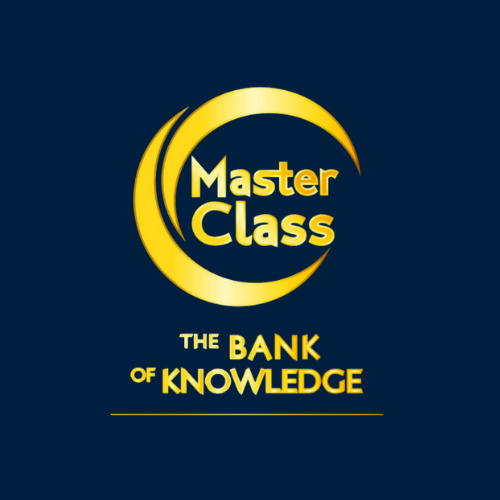Introduction:
In an epoch riddled with economic uncertainties and unprecedented challenges, the pursuit of sustainable cost savings has assumed paramount significance. The canvas of business history, adorned with the indelible lessons of the past, provides a foundation for comprehending the evolution of cost-saving strategies. Today's leaders are tasked with a dual imperative: navigating the intricacies of contemporary business dynamics while casting an anticipatory gaze into the future. This holistic analysis amalgamates these temporal dimensions, offering insights infused with the perspectives and experiences of iconic global pioneering leaders.
Historical Perspectives: Wisdom Forged in Crisis
Delving into the historical trajectory of cost-saving endeavors unveils invaluable lessons, enriched by the perspectives of economic stalwarts. Seminal studies by luminaries such as Keynes (Keynes, 1936) and Friedman (Friedman, 1957) illuminate how businesses weathered past economic storms. Insights drawn from their experiences underscore the strategic austerity measures and prudent financial management that stand as enduring pillars of resilience.
Contemporary Insights: Orchestrating Change in the Present
In the present landscape, where technology, globalization, and sustainability converge, the voices of contemporary leaders echo resoundingly. Institutions like the McKinsey Global Institute and the World Economic Forum provide a lens through which to view the role of digital transformation and sustainable practices in shaping cost-saving strategies. Leaders, such as those at IBM, bring these insights to life through transformative case studies.
Anticipating the Future: A Strategic Gaze Forward
As leaders peer into the future, the guidance of economic forecasters and futurists becomes paramount. Analyses by visionary economists provide predictive models, empowering businesses to position themselves strategically. The integration of scenario planning, championed by futurists like Nikki Greenberg, equips leaders to embrace agility and innovation. Reports from Hindustan Times: "Exploring the future: The transformative potential of blockchain technology" by Winston Hsiao and Oracle: "Transformational Technologies: Today How IoT, AI, and blockchain will revolutionize business illuminate the transformative potential of emerging technologies like blockchain and the Internet of Things (IoT).
The potential of blockchain | Mike Schwartz | TED Institute
Strategies for Enduring Financial Resilience: Pioneering the Path
1. Digital Transformation as a Cornerstone: A Symphony of Technological Advancement
In the current epoch, digital transformation transcends rhetoric, becoming a strategic imperative. Drawing inspiration from the successful metamorphosis of IBM (IBM Digital Transformation Case Study), leaders navigate a world driven by cloud computing, data analytics, and AI-driven solutions.
- Step 1: Assessing the Current Technological Landscape - (IBM, Digital Transformation Case Study):
- Leaders conduct a meticulous analysis of existing technologies, identifying areas for improvement.
- Step 2: Developing a Digital Roadmap:
- A clear plan for implementing digital solutions is outlined, ensuring alignment with organizational goals.
- Step 3: Investing in Training:
- The workforce is equipped with essential skills through targeted training programs.
2. Sustainable Practices: Beyond Compliance to Fiscal Prudence
Sustainability, once confined to environmental responsibility, has evolved into a nexus of fiscal prudence. Companies like Unilever (Unilever Sustainability Report) exemplify how meeting regulatory standards aligns with substantial cost reductions through energy efficiency and waste reduction.
- Step 4: Conducting a Sustainability Audit - (Unilever, Sustainability Report):
- A comprehensive evaluation of current practices identifies avenues for integrating sustainability measures.
- Step 5: Implementing Eco-Friendly Initiatives:
- Measures such as energy-efficient technologies and waste reduction programs are introduced.
- Step 6: Collaborating with Suppliers:
- Partnerships with suppliers who share a commitment to sustainability are fostered.
3. Strategic Workforce Management: Nurturing Human Capital
Insights from the Society for Human Resource Management (SHRM) underlines the pivotal role of strategic workforce management in achieving cost efficiencies. Leaders explore innovative HR solutions, fostering a workforce aligned with organizational goals.
- Step 7: Analyzing Workforce Efficiency - (the Society for Human Resource Management (SHRM), Workforce Management Insights):
- Employee productivity is evaluated, identifying areas for enhancement.
- Step 8: Implementing Flexible Work Models:
- Flexible schedules and remote work options are introduced for optimal workforce management.
- Step 9: Investing in Employee Development:
- Training programs are implemented, enhancing skills and promoting career growth.
4. Supply Chain Optimization: Navigating Global Disruptions
In an era of global disruptions, supply chain resilience becomes pivotal in cost management. Insights from The Institute of Supply Management (ISM) stress the importance of agile and transparent supply chains, urging leaders to explore technologies like blockchain.
- Step 10: Mapping the Supply Chain - (The Institute of Supply Management (ISM), Global Supply Chain Insights):
- A detailed map identifies vulnerabilities and areas for improvement.
- Step 11: Embracing Technology for Transparency:
- Blockchain and IoT solutions are implemented for enhanced visibility and traceability.
- Step 12: Diversifying Supplier Networks:
- Dependency is reduced by diversifying the supplier network for greater resilience.
Inspiring Leaders Globally: The Resounding Call to Action
Armed with historical wisdom, contemporary insights, and future foresight, leaders globally are poised to embark on a transformative journey. The pursuit of enduring financial resilience necessitates a commitment to innovation, adaptability, and strategic foresight. In the words of Peter Drucker, a beacon of business thought leadership, "In the pursuit of sustainable cost savings, leaders must not merely cut costs but cultivate a culture of continuous improvement and strategic innovation."
Conclusion: Crafting a Legacy of Resilience
In unveiling the path to sustainable cost savings, this comprehensive analysis serves as a beacon for leaders navigating the intricate tapestry of business dynamics. The amalgamation of historical knowledge, contemporary insights, and anticipatory strategies equips leaders to forge a resilient path towards enduring financial success. As the global business landscape evolves, the commitment to sustainable cost savings remains an enduring legacy, empowering leaders not only to weather storms but to thrive in the midst of change.



Comments ()